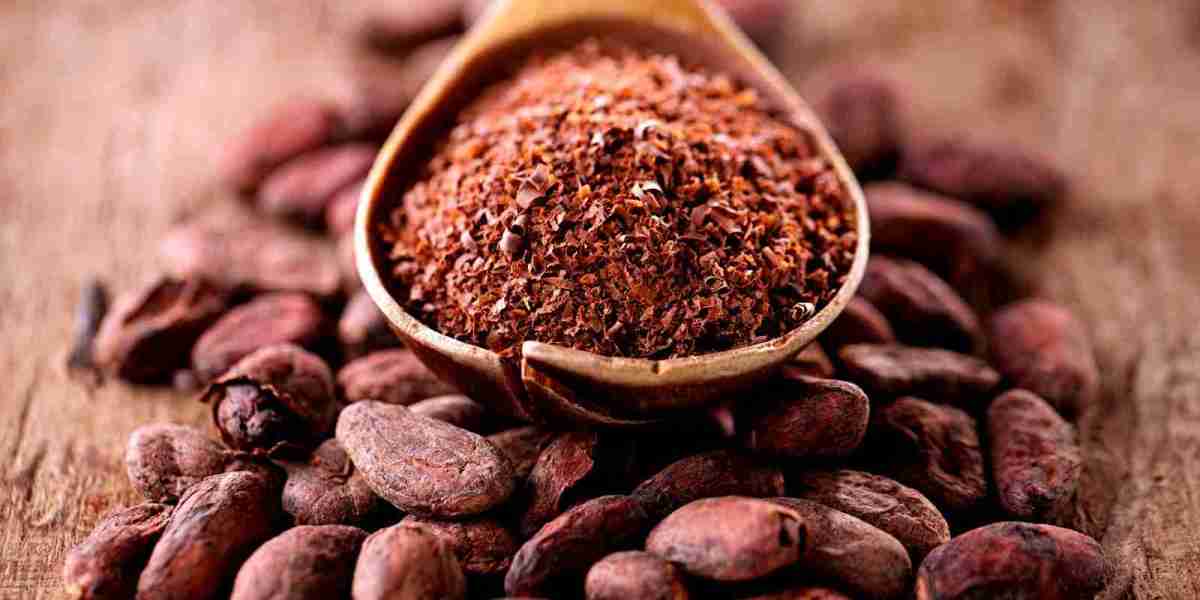Cocoa Market Dynamics: Exploring the Forces Shaping Global Supply, Demand, and Trade in 2025
The cocoa market plays a critical role in the global economy, underpinning multi-billion-dollar industries like chocolate, cosmetics, pharmaceuticals, and functional foods. As we move through 2025, cocoa market dynamics are increasingly shaped by a mix of environmental, economic, and social forces. These include volatile production patterns, shifting consumer preferences, sustainability concerns, and new regulations affecting trade and sourcing.
This article delves into the complex and evolving dynamics of the cocoa market, offering insights into how stakeholders can navigate ongoing challenges while capitalizing on emerging opportunities.
Supply-Side Dynamics: Weather, Labor, and Land Constraints
Cocoa is primarily grown in a narrow equatorial belt, with West Africa dominating the global supply. Côte d’Ivoire and Ghana collectively contribute more than 60% of global cocoa production, making the region central to the market’s stability. However, the supply side is increasingly vulnerable to a combination of climate volatility, aging trees, land degradation, and labor shortages.
Extreme weather events—such as droughts, irregular rainfall, and rising temperatures—are disrupting crop cycles and reducing yields. These climate stressors are leading to more frequent disease outbreaks, including black pod disease and cocoa swollen shoot virus, both of which can destroy entire plantations.
Moreover, most cocoa is produced by smallholder farmers operating on low incomes with limited access to technology, credit, or training. This structural challenge hinders productivity improvements and limits farmers' ability to adapt to changing conditions. As a result, many are shifting to more lucrative crops or abandoning farming altogether, reducing long-term supply potential.
Demand-Side Shifts: Health Trends, Premiumization, and Global Expansion
On the demand side, the cocoa market is experiencing a shift toward healthier and more ethically sourced products. In mature markets like North America and Europe, consumer preferences are evolving. Shoppers are gravitating toward dark chocolate with high cocoa content, lower sugar, and organic or fair-trade certifications. These changes are part of a broader health and wellness trend driving product reformulations and innovation.
At the same time, demand is rising rapidly in emerging markets. In Asia-Pacific, Latin America, and parts of Africa, growing middle-class populations, urbanization, and Western influence are boosting consumption of chocolate and cocoa-based goods. Countries such as China, India, Indonesia, and Brazil are becoming significant growth drivers, prompting multinational companies to expand their presence in these regions.
Functional foods and beverages, which include cocoa as an ingredient due to its antioxidant properties, are another area of growth. Cocoa’s use in health supplements, protein bars, and skincare products is expanding its relevance beyond confectionery, diversifying the demand landscape.
Price Volatility and Market Uncertainty
Cocoa prices are subject to significant fluctuations, influenced by supply-demand imbalances, weather events, political instability, and speculative trading. In 2025, prices remain relatively high due to concerns about declining production in West Africa and rising demand globally.
However, high prices don’t always translate to higher incomes for cocoa farmers. Many operate under fixed pricing systems or sell through intermediaries, capturing only a small portion of the final value. This disconnect between global market performance and farmer livelihoods is a persistent issue, contributing to poverty, low investment, and sustainability challenges.
Government interventions, such as the Living Income Differential (LID) introduced by Côte d’Ivoire and Ghana, are efforts to address this imbalance. While such measures aim to ensure fairer pricing, their impact on global trade remains mixed and continues to evolve.
Regulatory and Sustainability Pressures
Environmental and social sustainability are now central to cocoa market dynamics. Issues such as deforestation, child labor, and lack of traceability are prompting governments and companies to re-evaluate sourcing practices. The European Union has introduced regulations requiring cocoa imports to be deforestation-free and traceable to the plot level. Similar legislation is under discussion in the United States and other markets.
In response, industry players are investing in digital traceability platforms, third-party certifications, and farmer education programs. These efforts aim to improve transparency, promote ethical sourcing, and reduce the environmental footprint of cocoa production.
Still, compliance can be challenging for smallholder farmers, who often lack the tools and resources to meet new requirements. Collaborative efforts between governments, NGOs, and the private sector are essential to ensure inclusive and sustainable compliance.
Technological Innovation and Market Adaptation
Innovation is gradually transforming the cocoa industry. On the farm level, mobile apps, remote sensing, and weather forecasting tools are helping farmers improve yields and reduce losses. In the processing segment, improved fermentation, drying, and storage methods are enhancing bean quality and consistency.
Blockchain and AI-driven platforms are emerging as tools to enhance supply chain transparency, enabling companies to trace beans from farm to factory. These technologies also support regulatory compliance, consumer trust, and efficiency.
Research is ongoing into alternative cocoa sources, such as lab-grown cocoa or plant-based substitutes, to reduce pressure on natural ecosystems. While not yet commercially mainstream, these developments could become significant in the years ahead.
Strategic Outlook and Opportunities
The future of the cocoa market depends on how well stakeholders manage its complex dynamics. Key strategic priorities include:
Diversifying sourcing regions to reduce reliance on West Africa and mitigate climate and political risk.
Strengthening farmer resilience through financial inclusion, training, and access to climate-smart technologies.
Adapting to changing demand by investing in product innovation and targeting health-conscious and ethical consumers.
Improving supply chain integrity using digital tools and certifications to meet new regulatory standards.
Exploring new uses for cocoa in non-traditional sectors like wellness, skincare, and alternative foods.
Conclusion
The cocoa market in 2025 is shaped by a dynamic interplay of supply challenges, shifting consumer behavior, sustainability pressures, and technological advancement. As global demand continues to grow, particularly in emerging markets, supply-side constraints and regulatory reforms will require bold action from all stakeholders.
Understanding and adapting to these market dynamics is critical for ensuring long-term resilience, profitability, and ethical growth within the global cocoa value chain. By investing in innovation, supporting smallholder farmers, and promoting sustainable practices, the cocoa industry can build a more balanced and secure future for all participants.




